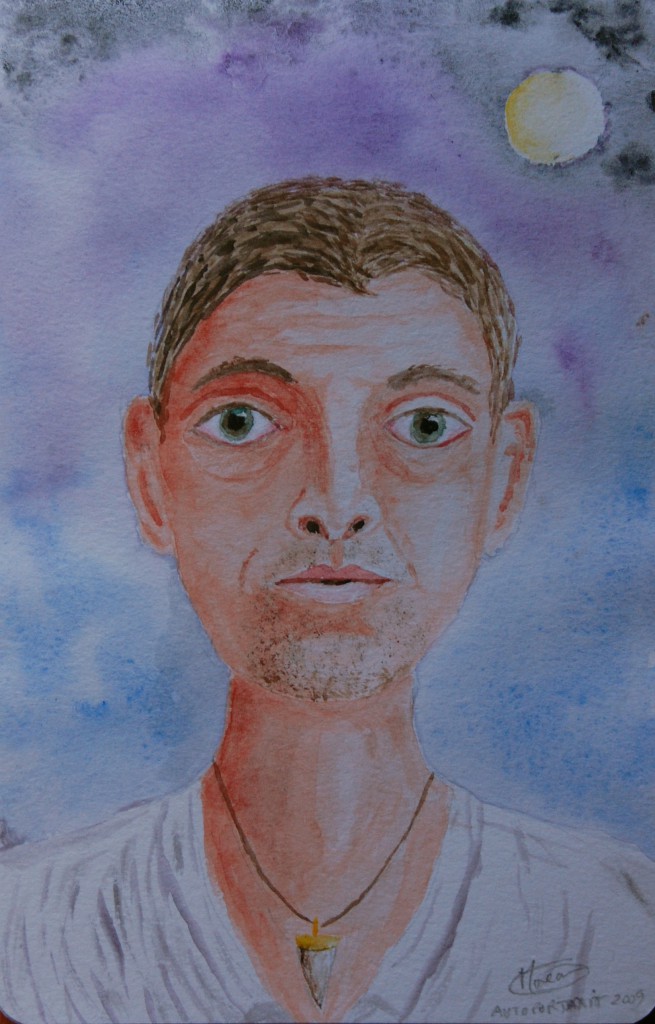Olivier Moreau (OmorO) was born in France in 1958 at Enghien les Bains. He was nurtured and inspired in his childhood by the Green Perigord and the Pink Granite Coast of Brittany. When he was 15 years of age his family moved to Québec. He lived there for 7 years before setting out alone for British Columbia. There that he met his wife, and together they travelled to Bermuda where they stayed from 1984 to 1990 before casting their anchor in Martinique. Ever since then, the French-Caribbean island has served as his residence and as a starting point for many other voyages…
His study of the sciences (Physics at Laval University, followed by a Bachelor of Science at U.B.C.) and a few other courses, simultaneously, in the fine arts, confirmed OmorO’s appreciation of art and science as complementary activities: both of them based on research and experimentation. Self-taught, he evolved in his craft through the study the Old Masters and the advice of his artist friends.
OmorO began to practice the fine arts with his friends in Québec. Their first show « Épingle à Linge » was held in 1981. Subsequently, he exhibited his work in Vancouver in 1984 and in Bermuda in 1990. As he naturally began to assume the responsibilities of providing for his family, he devoted himself to producing works purely for the pleasure. In 2010, he once again began to exhibit his work in art galleries with a solo show at the Atrium in Martinique, in the Galerie Arsenec. Consult the list of exhibitions for more details on his career.
The artistic influences on OmorO’s works are numerous; this presentation is more or less in chronological order:
- At six months of age, he visits the prehistoric cave of Lascaux in the arms of his parents (prehistoric influence).
- The symbolic influence of Gustave Moreau is probably ancestral and Celtic culture Coskaër / Cosquer is also deeply established (historical influences).
- He has always considered Museum visits as essential, even when the sun was shining! How could he resist the lovely Mona Lisa…
- His scientific studies were enhanced through natural, scientific and medical drawings: the artistic extrapolation of invisible worlds.
- Other important influences: science-fiction, comic strips, rock ‘n roll, ecology, oceans, outer space…
- The “Paranoid-Critical” method of Salvador Dali (a self-induced method of irrational thought based on critical and systematic expression of delirious associations and interpretations) was necessary before he could begin to practice surrealism.
- Benoît Mandelbrot‘s work with fractals at the beginning of the micro-information era shaped his perception of the world in 3 dimensions.
- Assemblages by a number of contemporary artists encouraged him to revise his relationship with objects and his materials.
- The watercolors of Winslow Homer introduced him to the pleasure of producing simple, fluid and spontaneous works.
- And finally, Pop Art gave him a sense of detachment from the work per se and an artistic perspective of the world as it is today.
According to OmorO, to be a contemporary artist consists of manipulating and diverting various objects as well as images in order to evoke an emotion. He uses different technics such as variations, recycling, collage, and cropping to produce these manipulations. From De Lascaux to Xerox, passing by the Renaissance, and evidently, Surrealism, everything is carefully remixed to surprise and to create a « recognizable innovation ». This remix implies that the contents of his work are to be taken as subliminal messages, capable of following you into your dreams…
His artistic production has four main themes: Surrealism and Situationism, Conceptual Assemblies, Classical Watercolors and Pop Art. The corresponding technics are oil painting, acrylic, montage and collage, watercolors, photography, computing, and electronics. Among his favorite themes are: parallel universes, science and science-fiction, the female body, the sea and seeds, obscure light and finally Gustavien symbols.
To be a great artist is to be politically committed! Read his « Manifeste du Hamac »

